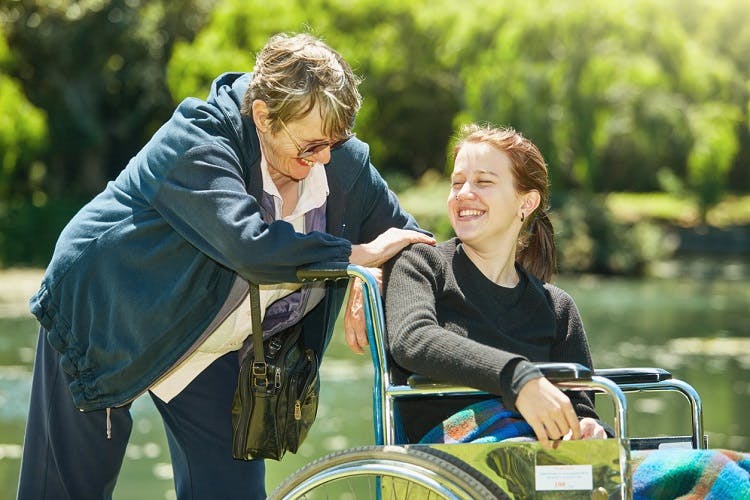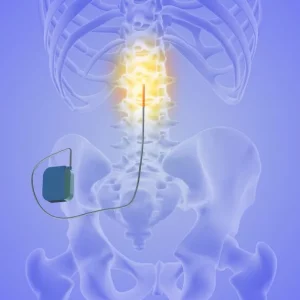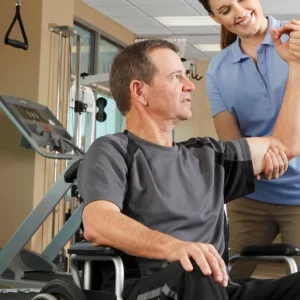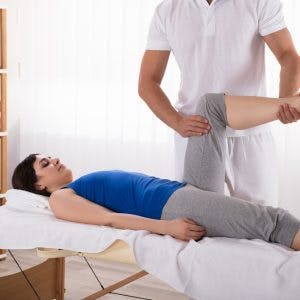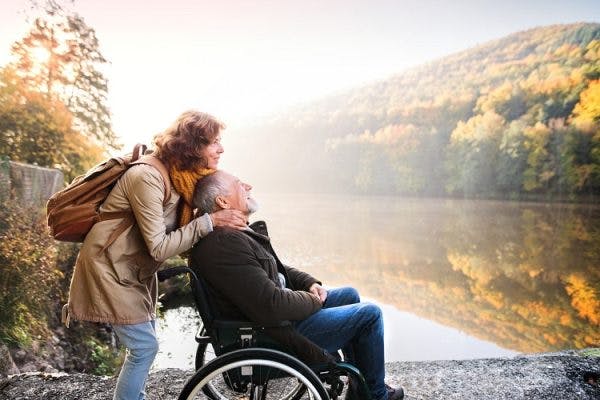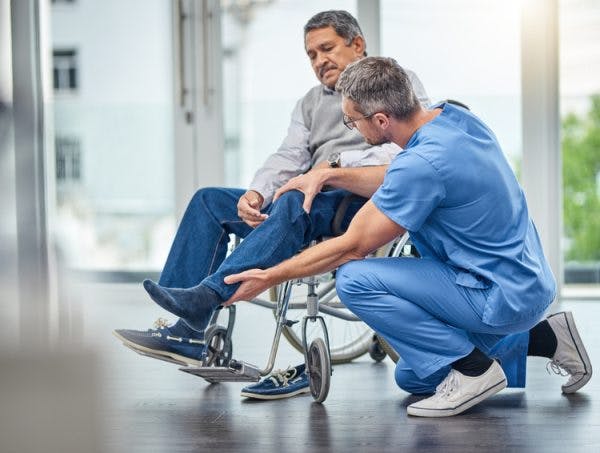Quality of life after spinal cord injury is dependent on a wide range of factors, including the severity of injury and one’s mental health status. Because every spinal cord injury is unique, everyone will learn to cope differently.
While many of the effects of SCI may seem out of your control, there are ways to be proactive and improve your quality of life.
To help you understand how spinal cord injury affects quality of life, this article will discuss factors that affect quality of life after spinal cord injury and tips to improve quality of life after spinal cord injury.
Factors that Affect Quality of Life After Spinal Cord Injury
Many people don’t realize the full impact of their spinal cord injury and how it affects their quality of life until after they leave the hospital and return to their everyday lives. In many ways, your body might not feel like your own due to loss of motor control and/or sensation. As a result, it can feel like you’re learning how to move and function again for the first time.
Although ‘quality of life’ is a frequently used term, its definition remains vague and is difficult to measure. Typically, medical professionals will assess your quality of life through the Spinal Cord Injury – Quality of Life (SCI-QOL) measurement system or 36‑Item Short-Form Health Survey (SF‑36).
These can give medical professionals a good idea of how you perceive your current quality of life. Furthermore, depending on your responses, these assessments may help guide your treatments to promote attaining an improved quality of life.
Various factors can affect quality of life after spinal cord injury, including:
Ability to participate in everyday activities
Depending on the level and severity of the SCI, weakness or loss of motor control can significantly limit one’s ability to perform everyday activities like walking, getting dressed, and using the bathroom independently. This may contribute to the perception of having reduced control over one’s life.
Social support
Feelings of isolation can significantly lower one’s quality of life. There are many resources and support systems that can help you feel less alone during this difficult time.
Financial circumstances
The cost of healthcare and rehabilitation services for spinal cord injury can be significant. Additionally, SCI can affect one’s ability to return to their jobs in the same capacity, if at all, which can be a major source of financial stress. To ease this burden, individuals should look into their insurance policy to identify any services they can take advantage of and determine if they quality for disability benefits.
Mental health
For some, learning to adapt to life after SCI can be extremely challenging. As a result, individuals may struggle with their mental health and develop mood or anxiety disorders. This can interfere with one’s motivation to participate in rehabilitative therapies.
Pain
Most individuals with SCIs experience some extent of pain. It can discourage individuals from participating in everyday activities, socializing, and rehabilitation. Common causes of pain after SCI include overuse of unaffected muscles, sensory complications below the level of injury, and secondary effects of SCI such as pressure sores or spasticity.
Prior Lifestyle
Individuals that had led a very active lifestyle prior to their SCI may have more difficulties adjusting to their current abilities. This is especially true of individuals who find their identity in an active job or hobby, such as carpenters and runners.
In the following section, we’ll discuss several steps you can take to improve quality of life after spinal cord injury.
7 Ways to Improve Quality of Life After Spinal Cord Injury

To effectively improve quality of life after spinal cord injury, individuals should focus not only on the physical impact of their SCI but also the social implications.
It’s suggested that individuals who adjust to life after SCI well are those who are able to redefine their values and place less emphasis on their physique.
Below, we’ll discuss several tips to promote a better quality of life after SCI.
1. Use Adaptive Tools if Necessary
Adaptive tools can help individuals with spinal cord injuries improve their quality of life by enabling them to live more productive, independent lives. For example, if you’re unable to grip your utensils, you can use adaptive utensils that wrap around your forearm to feed yourself independently rather than relying on assistance from someone else.
Additionally, many individuals can learn to drive again by getting car adaptations (such as hand controls or wheelchair ramps) installed.
Adaptations help individuals perform tasks that they otherwise may not be able to do. This can help improve quality of life by boosting one’s confidence and encouraging them to try more things on their own.
2. Meditate
Making an active effort to think positively can drastically affect your actions and mood throughout the day. Many individuals with SCI experience depression or anxiety from comparing their lives before and after injury.
Setting aside time daily to meditate and practice mindfulness can help you become more present-minded, accepting of yourself, and move forward. Engaging in religious activities, such as praying, during times of meditation can also help to improve your spiritual wellness and overall quality of life.
3. Surround Yourself with Friends and Family
Many individuals that report lower quality of life after spinal cord injury attribute it to loneliness.
Just because an SCI has affected your mobility does not mean that you have to compromise your social life. Your friends and family want to help you and see you recover, both physically and mentally. Surrounding yourself with loved ones may help you feel more supported as you learn to adapt to life after SCI.
4. Join a Support Group
Sometimes, you may feel like your friends and family don’t understand what you’re going through. Joining a spinal cord injury support group can help connect you to people who do. There, you can express your concerns, learn from others’ experiences, and discover helpful resources.
You’ll also be able to help others who are struggling by sharing your own experiences and being there to listen.
5. Participate in Rehabilitative Therapy
Participating in rehabilitative therapies such as physical and occupational therapy can significantly improve quality of life after spinal cord injury. These interventions focus on improving one’s mobility and functional independence.
A physical therapist will assess your abilities and create a custom exercise plan to improve strength and motor control. The best way to improve your mobility after spinal cord injury is to practice moving as much as you can. Consistent, task-specific repetition may help retrain your brain, spinal cord, and muscles to work in sync again.
Additionally, if it’s indicated, going to occupational therapy can help you to increase your independence. This typically involves working on daily activities such as bathing, dressing, and toileting. An occupational therapist can also help you with community re-integration skills such as participation in social/leisure activities, returning to work or school, and navigating community transportation.
6. Eat Healthily
What you eat can affect your mood, energy levels, focus, and overall functioning of your body. When your physical performance and psychological state are not optimized, it can impact your quality of life. A nutrient-rich diet will help ensure that your mind and body are in optimal shape to pursue spinal cord injury recovery.
7. Stay Active
Even if your abilities have changed significantly, there are plenty of ways to stay both physically and mentally active following a spinal cord injury. Participation in adaptive sports or exploring new hobbies can help you find new passions and increase your quality of life.
Even if you’ve sustained a higher-level spinal cord injury, there are many ways to continue to participate in recreational activities, such as renting a track chair to go on outdoor trails or playing virtual reality games.
Quality of Life After Spinal Cord Injury: Key Points
While learning to engage in life after spinal cord injury can be an adjustment, individuals can continue to have a high quality of life. Allow yourself time to cope and take a holistic approach to health. The way you eat, sleep, think, socialize, and exercise are all connected to overall well-being.
Remember, there are resources in place, such as disability benefits and support groups, designed to help you out.
We hope this article helped you understand how a spinal cord injury can affect your quality of life and the most effective ways to improve it.
